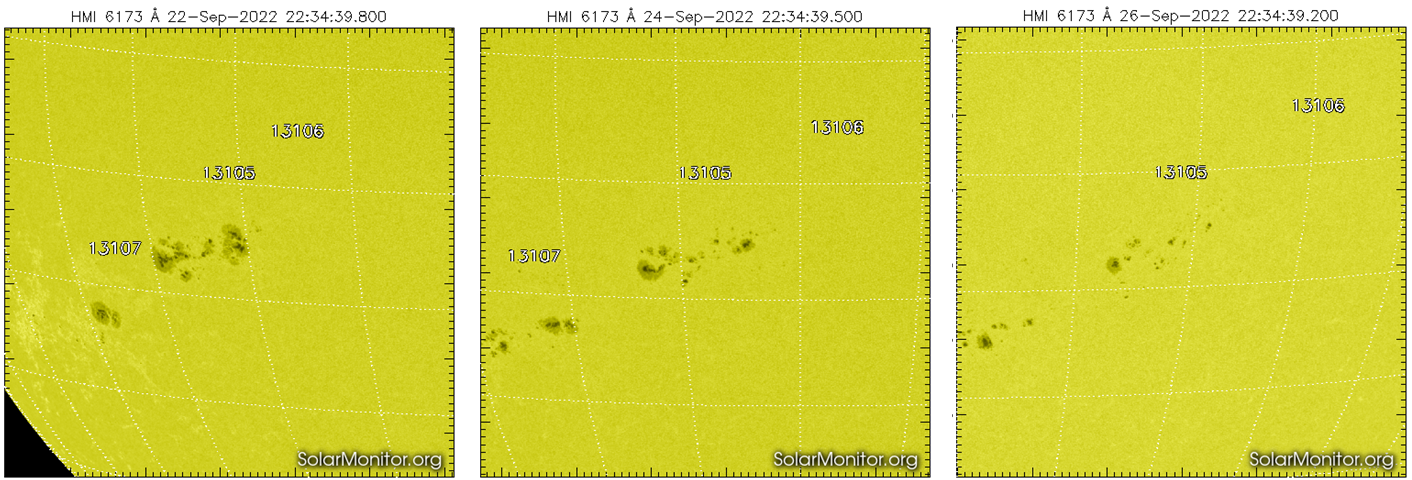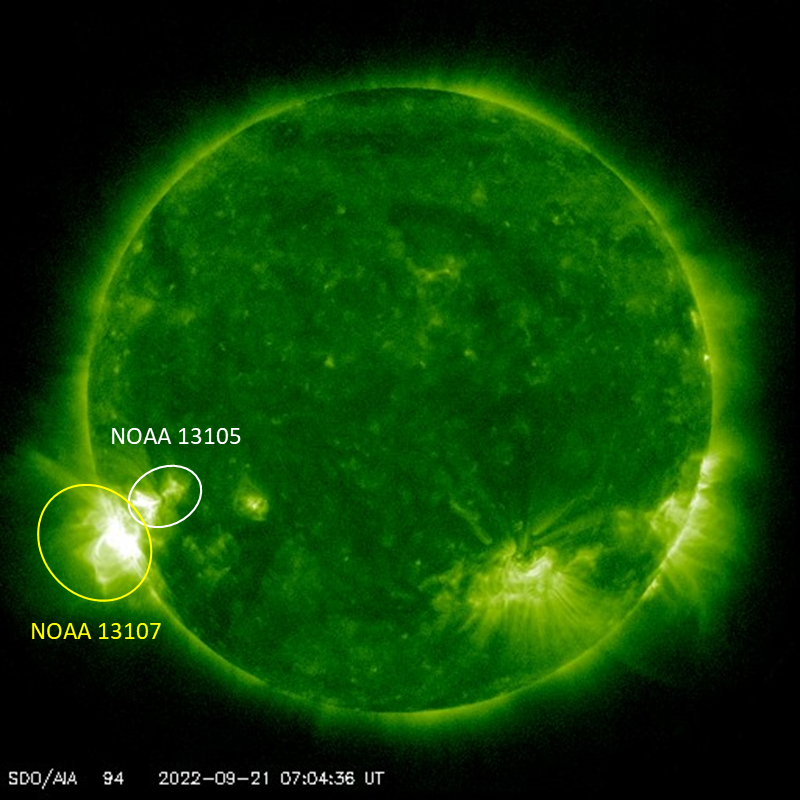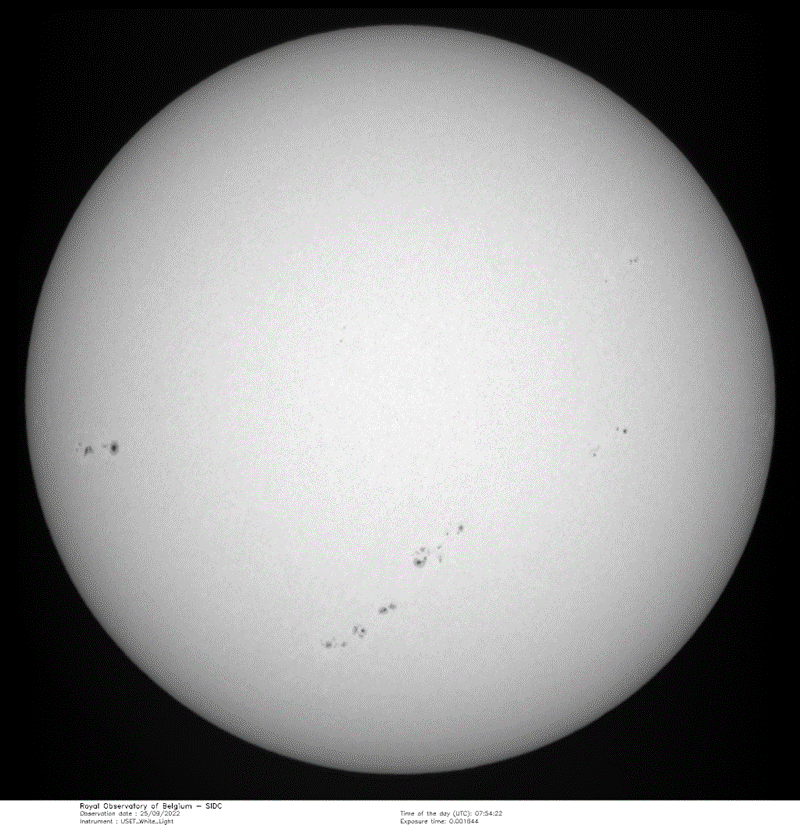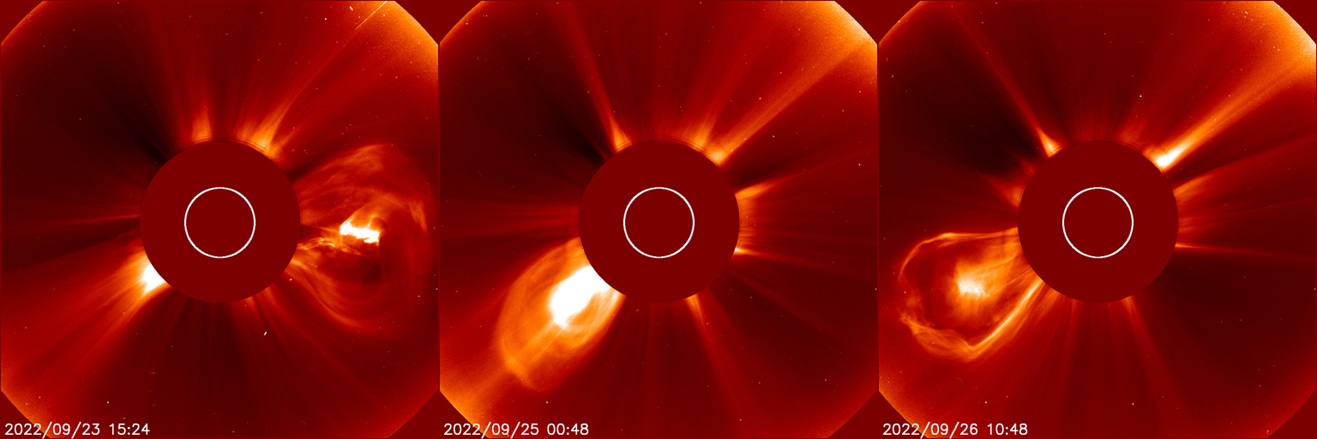When NOAA 13105 rounded the southeast limb on 19 September, it became visible as a moderately sized sunspot group showing quite some complexity in its inner and trailing portions. However, it quickly became clear that its magnetic structure was a lot simpler, and over the next few days, its number of sunspots as well as their size gradually declined. This can be seen in the white light images underneath taken by SDO on 22, 24 and 26 September highlighting the decay of the sunspots in this active region. In the end, NOAA 13105 produced only a few C-class flares.

In the wake of NOAA 13105 developed another sunspot region, NOAA 13107 (see images above). It was quite bright and dynamic in extreme ultraviolet (EUV) images when it started its transit over the solar disk on 20 September. It has produced 1 low-level M-class flare so far, an M1 flare ("medium-size") on 21 September at 07:02UT, as can be seen in the annotated SDO EUV image underneath. Unfortunately, also this region started decaying in the subsequent days.

Both active regions formed a nice sunspot pair during the Open Doors at the Royal Observatory of Belgium (ROB) on 24-25 September. The picture underneath was taken by the white light solar telescope of USET (Uccle Solar Equatorial table) early on 25 September. Unlike the Open Doors in 2018 which was close to the solar cycle minimum, there was no need for the guides to point out the sunspots to the visitors this time!

Despite the not so overwhelming flare activity, plenty of coronal mass ejections (CMEs) were observed during the week. Alas, no luck with these features either. Most of them occurred close to the solar limb and thus had no earth-directed component at all, or at most could deliver only a glancing blow to the Earth's magnetic field. Underneath a few of the more stunning CMEs observed during the second half of last week (SOHO/ LASCO C2), showing the classic “three-part” structure of a CME consisting of (1) a bright front; (2) a dark cavity; and (3) a bright, compact core. However, not all CMEs show this typical 3-part structure, and -when directed to Earth- the substructures are often very difficult to distinguish in the recorded solar wind data. Obviously, this is an active field of research in which also scientists of the ROB are deeply involved.






